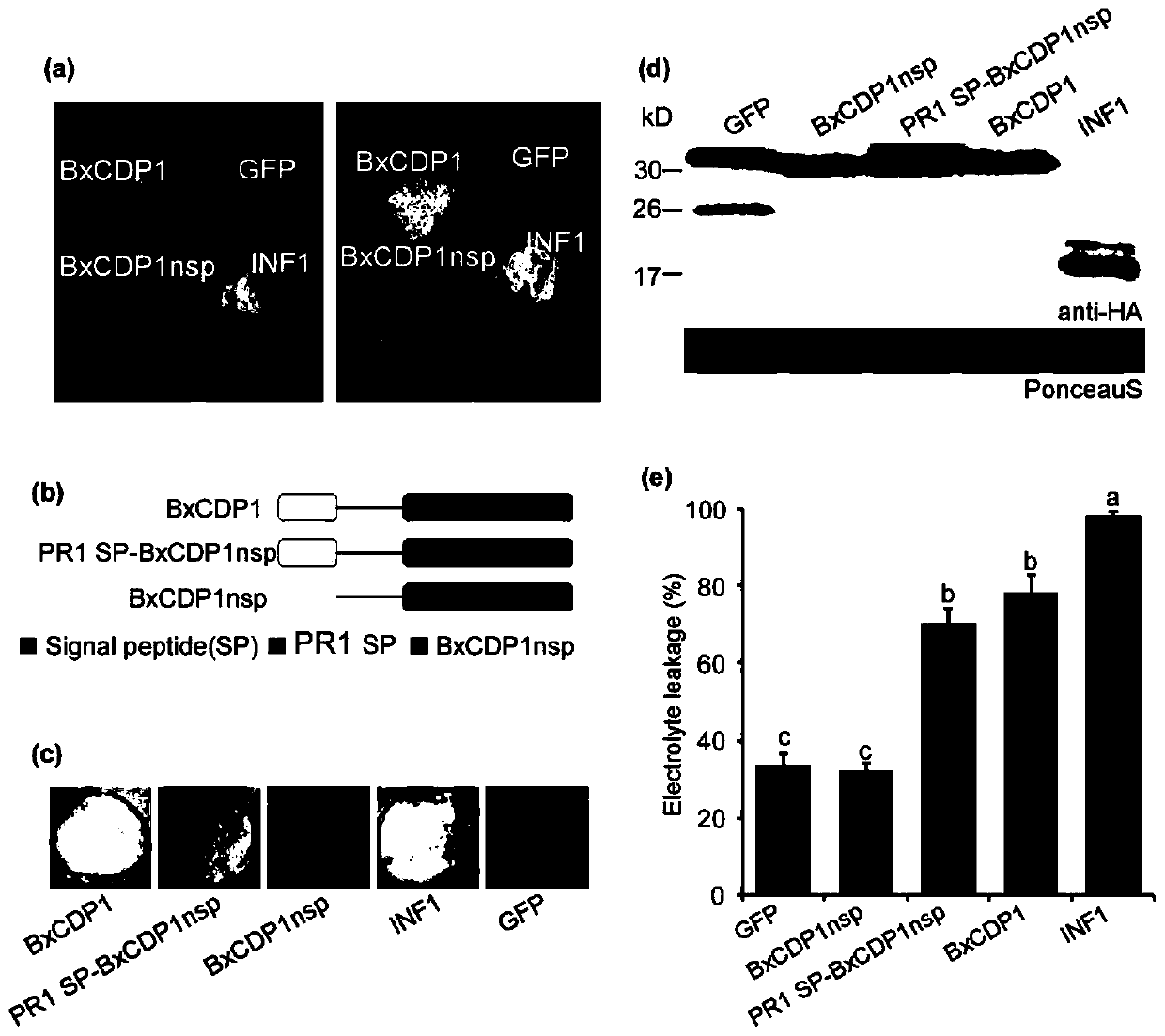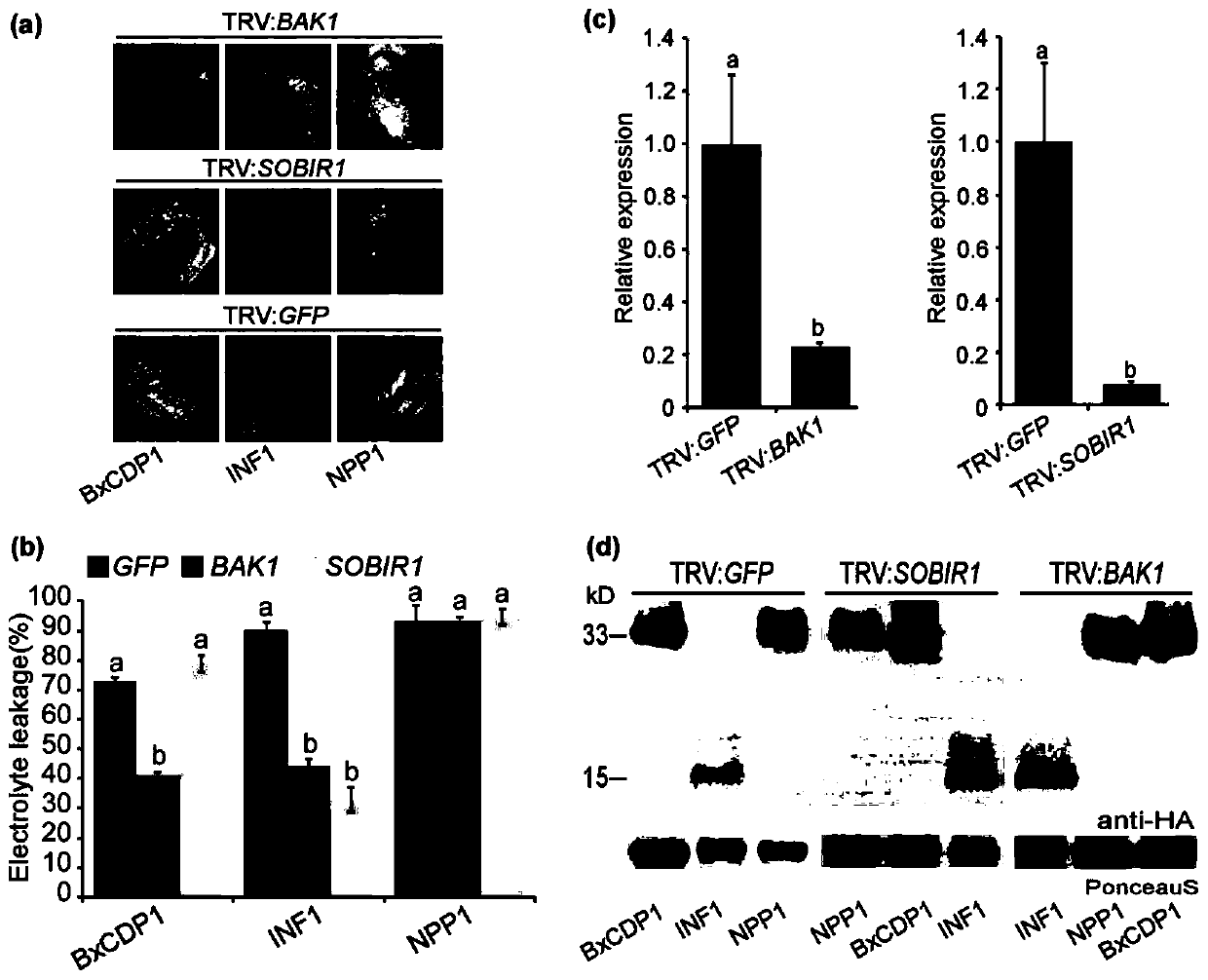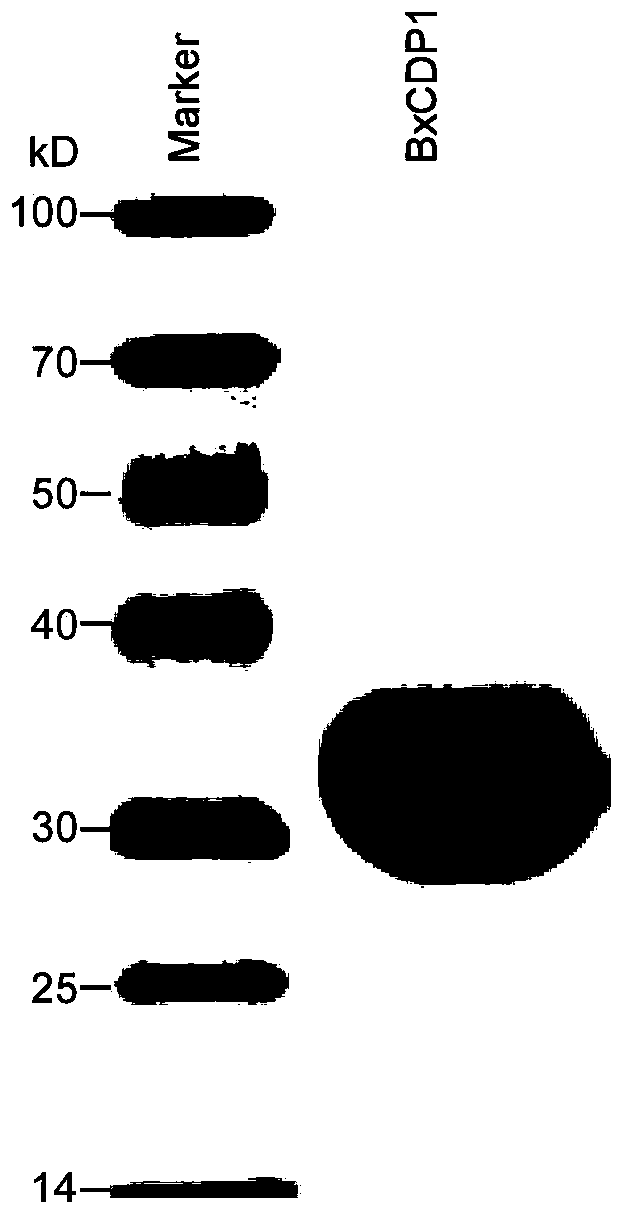Protein BxCDP1 of bursaphelenchus-xylophilus pathogen-associated molecular patterns and application thereof
A related model, the technology of pine wood nematode, applied in the biological field to achieve the effect of improving resistance and good development and application prospects
- Summary
- Abstract
- Description
- Claims
- Application Information
AI Technical Summary
Problems solved by technology
Method used
Image
Examples
Embodiment 1
[0028] 1.1 Transcriptome sequencing at the early stage of pine wood nematode infection
[0029] The pine wood nematode virulent strain AMA3 (isolated from the naturally infected Pinus massoniana in Maanshan City, Anhui Province) was selected to infect the 3-year-old Japanese black pine, and the tree body was cut into small sections when the pine wood nematode was infected for 6h, 12h and 24h, respectively. Nematodes were isolated using the Baermann funnel method. After that, the pine wood nematode samples were sent to Novogene for transcriptome sequencing. Experimental results: B. xylophilus collected at 3 early stages of infection (6h, 12h and 24h) and on Botrytis cinerea (0h) were successfully sequenced for transcriptome and subsequently analyzed.
[0030] 1.2 Screen the genes up-regulated in the early stage of B. xylophilus infection to screen for candidate effectors
[0031] Genes whose up-regulation times were greater than 2 in the early stage of B. xylophilus infection...
Embodiment 2B
[0042] Example 2 Expression of BxCDP1 in Nicotiana benthamiana that silences BAK1, SOBIR1 and GFP
[0043] In the experiment of transiently expressing Nicotiana benthamiana in Example 1, it was found that the BxCDP1 protein could cause the necrosis of Nicotiana benthamiana leaves. Using virus-induced gene silencing (VIGS) technology, co-receptor brassinosteroidinsensitive 1-associated kinase 1 (BAK1) and suppressor of BIR1-1 (SOBIR1) in Nicotiana benthamiana were sequentially silenced, and GFP-silenced Nicotiana benthamiana was used as a control. The viral expression bodies pTRV1, pTRV2: BAK1, pTRV2: SOBIR1 and pTRV2: GFP plasmids were electroporated into Agrobacterium competent GV3101 according to the method 1.3 in Example 1. The Agrobacterium carrying the above-mentioned carrier was adjusted to OD with a spectrophotometer according to the 1.3 method in Example 1. 600 The value is 2. The Agrobacterium carrying pTRV2: BAK1, pTRV2: SOBIR1, pTRV2: GFP and the Agrobacterium ca...
Embodiment 3B
[0045] Expression and purification of embodiment 3BxCDP1 pure protein
[0046] After the open reading frame (Open Reading Frame, ORF) of BxCDP1 was amplified by PCR, the purified product was connected to the yeast expression vector pPICZαA, and the pPICZaA vector carrying BxCDP1 was heat-shock transformed into the large intestine according to the method 1.3 in Example 1 In the Bacillus Competent Top10, the plasmid was extracted according to the method 1.3 in Example 1, and sent to the company for sequencing. After the sequencing is correct, linearize the plasmid and then electrotransfer it into the competent yeast KM71H according to the method 1.3 in Example 1. Immediately after the electrotransfer is completed, add 500 μL of sorbitol to the competent yeast. The successfully transformed transformants were placed on a solid plate of Yeast extract peptone dextrose medium (YPD) containing 100 μg / mL bleomycin at 30°C for 3 days. Buffered glycerol-complex medium (BMGY) containing ...
PUM
 Login to View More
Login to View More Abstract
Description
Claims
Application Information
 Login to View More
Login to View More - R&D
- Intellectual Property
- Life Sciences
- Materials
- Tech Scout
- Unparalleled Data Quality
- Higher Quality Content
- 60% Fewer Hallucinations
Browse by: Latest US Patents, China's latest patents, Technical Efficacy Thesaurus, Application Domain, Technology Topic, Popular Technical Reports.
© 2025 PatSnap. All rights reserved.Legal|Privacy policy|Modern Slavery Act Transparency Statement|Sitemap|About US| Contact US: help@patsnap.com



